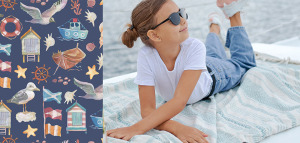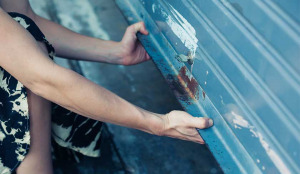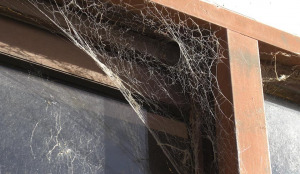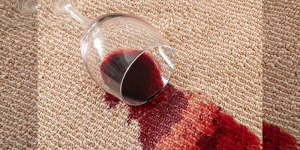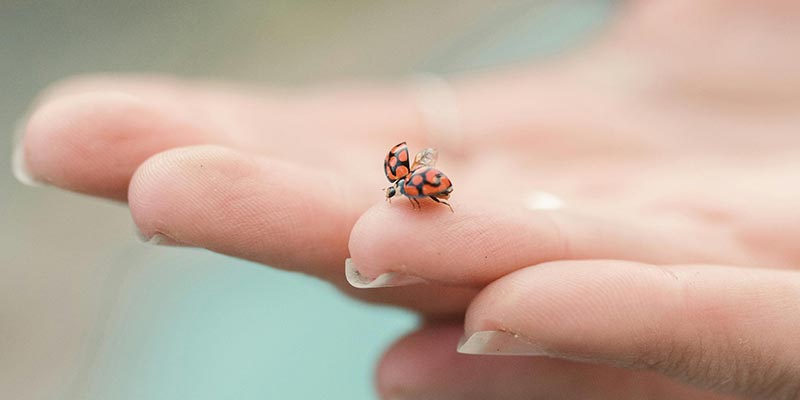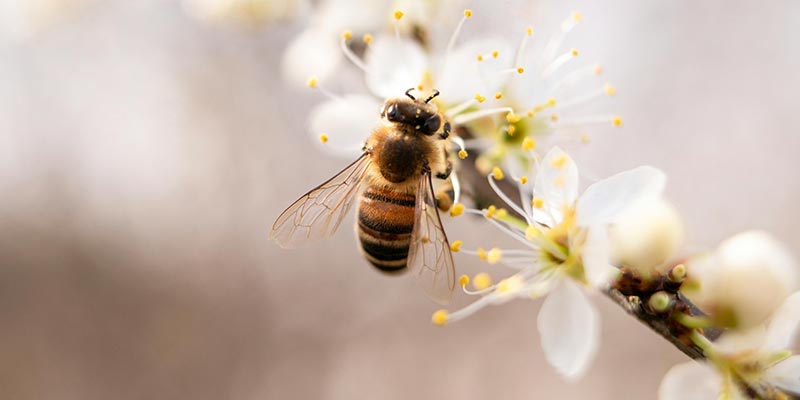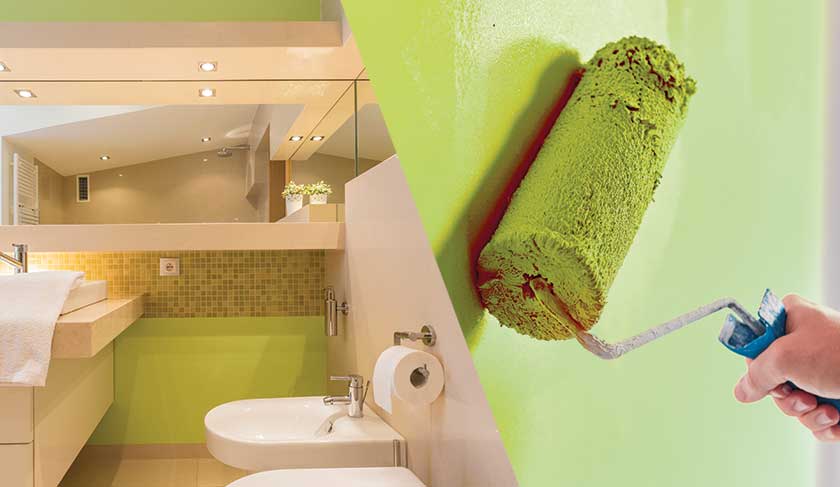Attract beautiful birds to your tiny house garden, by creating a bird sanctuary. We explain how you can invite birds into your tiny home naturally and easily.
If you’re thinking of creating a bird sanctuary, then thank you. Using spare outdoor space around your tiny home can help save birds every year and provide threatened birds with a safe stopping point.
Our feathered friends bring beauty, movement, color, and sweet chirps of music to any garden or yard. They also provide the additional and functional benefit of controlling the destructive insect population. They love to feast on many of the pesky pests that can invade garden flowers and plants. You already have some birds visiting your tiny home garden or balcony now.
However, if you want to attract birds to your garden and a greater variety of species, you’ll have to provide a bird sanctuary. Birds can’t read a “birds sleep here free” sign, and won’t understand just good intentions. Learn how to create a bird sanctuary around your tiny home in just a few easy steps, and offer a new home for wild birds to stay.
How to Create Bird Sanctuary in Your Tiny House Garden
Key Requirements for a Bird Sanctuary
In this guide we will explain how to create a small bird sanctuary in your tiny home garden area. It is not very difficult as long as you cater to their three basic needs:
- Food
- Water
- Shelter
To do this, we provide the birds with trees/shrubs for food and shelter, and we provide a source of water. It’s quite simple, really. Let’s go into a bit more detail on how exactly you do that.

Create Bird Shelters in Your Tiny House Garden
CHoose Trees and Shrubs to Attract Birds
Birds love to eat fruit, nuts, seeds, and berries. Adding trees and shrubs that provide these treats, you will quickly enjoy flocks of beautiful birds to your home. The foliage of these trees will also provide secure sites for their nests to protect them from harsh weather and predators. It will also attract the insects they love to eat.
Plan your tree/shrub placement
The very first thing you need to attract birds is to consider whether you’ve got enough or the right trees. You may not have much space around your tiny home for a garden, especially trees, so choosing wisely is important. The right trees provide a home and shelter for birds and have branches where birds can create nests. Certain trees and shrubs also help provide food to the birds, so they don’t have to rely only on birdseed or what they can find around your place.
If you do not have any trees or shrubs, start planning out some with trees such as maple or small conifers, which can be grown in your area without causing too many problems. You don’t want to grow a tree just because a certain bird will appreciate it, so make sure it is something that that fits with your aesthetic and tiny home space, and also consider that the root depth and life cycle of a tree must fit in well with your living situation and tiny house space.
Select your tree/shrub varieties
Make sure you include flowering plants since birds are pollinators for flowering plants that secrete nectar. They’ll be drawn to your area if they have plenty of nectar to sip on, and a natural habitat to trust in. If you have a large enough yard, you can simply plant your own little forest, and install some garden paths and benches to help provide you some coexistence with the birds.
Choose native plants
If you want to appeal to a certain bird, you can plant trees and shrubs native to that bird’s habitat. Since you’re most likely trying to attract a local species of bird, rather than an African Peacock, the plants you choose should also be local, and grow well in your native soil and weather. These plants will help each other grow strong and won’t take over your yard.
Below is a selection of popular bird-attracting trees and shrubs suitable for North-American readers. Alternatively, you could consult a book of native plants for your area, walk around your local botanic gardens, or simply look around your local parks and forests to get an idea of what native plants grow in your local region.
| Tree/Shrub | Notes |
|---|---|
| White Birch | The ample seeds on this tree will attract redpolls, goldfinch, and pine siskins. |
| Cherry Tree | Varieties such as Shubert’s Chokecherry and Mayday grow cherries that people don’t eat, but all kinds of birds adore. |
| Conifers | An abundance of seeds from the cones provide food for many birds. The Cedar Waxwings especially love to feed on the red fruit of the yew. The density of Conifer trees such as the Spruce, Fir, and Pine also provides safe nesting sites. |
| Elderberry | This shrub produces a dark, mature fruit that songbirds love. This is especially true for thrushes and warblers. |
| Virginia Creeper | This is a gorgeous climbing vine that bears shiny blackberries. Birds such as bluebirds, kingbirds, and flycatchers will happily feed on them. |
| Fruit-bearing shrubs (eg raspberries, blackberries, currant, gooseberries) | Any small shrubs with fruit will attract many varieties of birds |
| Flowering shrubs (eg snapdragons, zinnias, petunias, phlox, bleeding heart, bee balm) | Hummingbirds love these flowers (especially red ones). They also attract bees and other beneficial insects. |

Water & Feed Birds in Your Tiny House Garden
Attract more birds with a bird feeder
You can also invite more birds to your tiny home garden and yard by offering them food from a bird feeder. To attract a diverse group, be sure to give them a large menu of choices, including sunflower seeds, dried fruit, cracked corn, and suet. You will find that some birds will eat from an elevated tray on a feeder, and others will not, preferring to feed on the ground.
Hummingbirds, one of the most enjoyable birds to inhabit your yard, are attracted to the sweet nectar of flowers such as snapdragons, zinnias, petunias, phlox, bleeding heart, and bee balm. They love red flowers the best, but also prefer orange and pink. You can also invite these rapid little fliers by hanging a dispenser filled with sugar water, as they require eight times their weight in water every day.
Attract birds to your Tiny garden with a water source
Finally, don’t forget the water. Birds need water just like we do. If they can’t get a drink near your home, they won’t stay long enough to nest in your trees or pollinate your flowers. For small yards and sanctuaries, just one small birdbath should be well enough. If you have a larger budget or a larger sanctuary, find some bigger birdbaths, or make your own.
Bird Bath Tips:
- The bird bath should hold 1 to 3 inches of water only.
- The bird bath should have a rough bottom. Birds are more likely to come back if they don’t slip and slide around.
- Make sure to place the bird bath near trees. Birds will move from the trees and their nests to take a bath or get a drink. They need to be able to fly back up to the trees if they’re scared.
- Avoid placing your birdbath near any shrubs. Your neighbour’s cat might use that as a pouncing point!
Final thoughts…
Creating a bird sanctuary to attract birds to your yard is fairly simple, as long as you cater to their basic needs: food, water and shelter. By planting the trees, shrubs and flowers around your tint house or on your balcony, that provide birds with food, water and shelter, you will be rewarded with a garden of beauty and song every day.
On a final note, if you want to create a really secure ‘safe-zone’ for your birds, you would do well to keep out the neighbourhood cats and feral animals that like to prey on birds. If the birds feel threatened by cats, foxes or another species, there is no amount of food and water you can provide to entice them in.
Check out our articles how to attract bees to your tiny house garden and how to attract beneficial insects, to turn your tiny home outdoor space into a thriving natural eco-system that helps both you and the world.
Author
-

Hi, I’m Rach, the other half of NestKoo. I grew up on a sheep farm in Australia where I spent most weekends in the yard fixing or constructing something or other; essential DIY skills that I still use today at home or helping others.
View all posts


